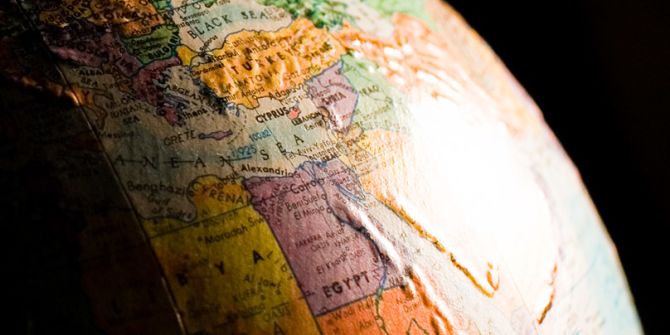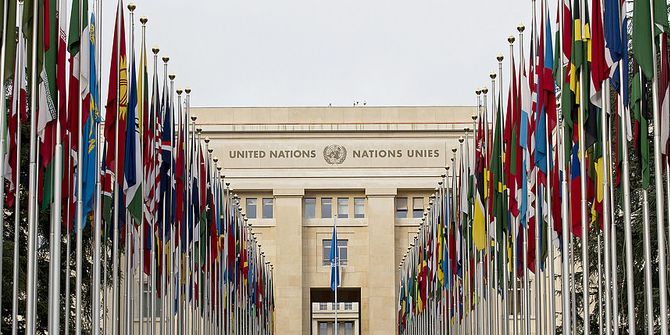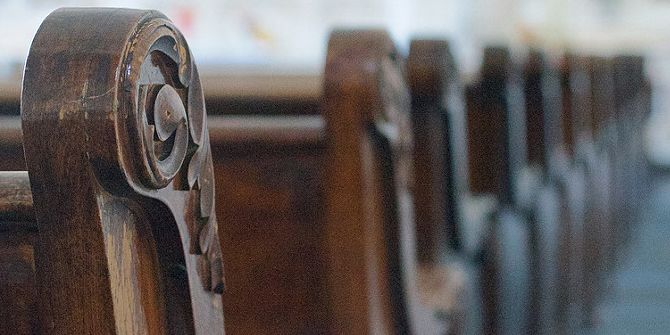In recent years there has been more of an effort to incorporate religion and religious actors in humanitarian work to better reflect the lives and experience of local communities. This new book champions the co-operation of religious and secular actors in responding to humanitarian crises. Ellen Goodwin sees Secular and Religious Dynamics in Humanitarian Response as a deft exploration of the complexities of organisational biases and assumptions and a foundation for further research in this field.

It is increasingly recognised that religion and religious actors have an impact on humanitarian processes. That being said, the international community continues to marginalise religion and religious actors. On top of this, both academics and humanitarians currently employ little or no reflection on the role that the secular plays in humanitarian responses. Dr Olivia Wilkinson’s new book Secular and Religious Dynamics in Humanitarian Responses responds to these gaps and limitations. The book demonstrates why and how secular-religious dynamics should be taken into account in the future of humanitarian studies and practice. Distinctively, the author emphasises the secular as a crucial part of secular-religious dynamics which impact the success of humanitarian responses. Wilkinson is well placed to respond to these gaps in her role as Director of Research at the Joint Learning Initiative for Local and Faith Communities; an international collaboration on evidence for faith groups’ role and contributions to local community health, wellbeing and ending poverty. As a result, Secular and Religious Dynamics in Humanitarian Responses presents a necessarily challenging and compelling contribution to the field of Religion and Humanitarianism.
The publication of Wilkinson’s book Secular and Religious Dynamics in Humanitarian Response makes a timely contribution to the ongoing shifts and debates within the humanitarian system. As humanitarian crises become increasingly frequent, complicated and protracted, the international community has acknowledged its failure to keep pace. As a result, over the last few years, the humanitarian system has sought to find ways to make responses to crises more effective. The thesis of this book has something important to say to these ongoing discussions, particularly in terms of localisation. The localisation agenda is a key aspect of the humanitarian sphere’s vision for more effective humanitarian response and it is both an implicit, and in the latter chapters, an explicit focus of Wilkinson’s book.
This book is, in part, a discussion about power imbalances and the impact they have on humanitarian responses. In the introduction, the author states that structures and assumptions, specifically between secular and faith-based organisations, but also more broadly between different organisations working in humanitarian settings, lead to prejudices, biases and power imbalances. These create obstacles for the improved engagement and partnerships that international humanitarian actors say they want with local and national actors, as well as beneficiaries, for more effective humanitarian action. In order to bring about the localisation of humanitarian responses it is vital to contend with the intersections and areas of contention between humanitarians and local communities, of which secular-religious dynamics are one part.
Wilkinson’s examination of secular-religious dynamics challenges the formal humanitarian sphere’s current mode of engagement with religion and religious actors. While the international community has begun such engagement, many have noted that this engagement remains broadly narrow and instrumental. It focuses predominantly on the role of elite Faith-Based Organisations (FBOs) and the utility of local faith communities for linking international FBOs with affected people. This approach is at the expense of other types of religious actors, expressions and forms, neglecting the capabilities of local religious actors, their agency and how they understand humanitarian crises. I have written before on this blog that Humanitarian Studies and practice could learn a lot from Religious Studies in how it approaches this subject. A Religious Studies approach, incorporating a focus on ritual, tradition, inner belief, and lived, embodied religious experiences could help explore the different ways that religion, at all levels, impacts humanitarian processes. Chapter three of this book in particular challenges the limited engagement of the formal humanitarian sphere with religion and religious actors by exploring the ways that religious beliefs, practices, understandings and authority impact and interact with humanitarian processes. While much of chapter three is not necessarily new information for people working on Religion and Humanitarianism, it is refreshing to see a more nuanced approach to the subject being adopted.
The most distinctive aspect of this book is its emphasis on the role of the secular. The author applies the same level of nuance to her examination of the secular in the humanitarian system as she does to the role of religion. She explores the different ways that the secular is understood and lived, primarily in terms of boundary-making, in humanitarian settings. Wilkinson invokes an example of this from her fieldwork in the Philippines, where local communities frequently asked secular organisations to help rebuild church buildings. Many of the staff at secular organisations saw this as a clear boundary in their work, particularly against a backdrop of budget restrictions.
Secular and Religious Dynamics in Humanitarian Response challenges the idea that the religious and the secular are at two opposing ends of a spectrum. Instead, this book explores the religious and the secular as co-existing concepts, with a co-presence in humanitarian settings. The thesis of this book reads like a warning; if we overlook the role of the secular in humanitarian responses, if we ignore the fact that the secular is not neutral and has its own web of norms and consequences that affect how people and organisations generally, including in humanitarian settings, relate to each other, then we are blind to the ways that those in power delineate what is and is not acceptable and how this impacts the effectiveness of humanitarian responses.
A considerable strengths of this book is its relevance to both academia and practice. It invites a broad range of actors, at all levels, both secular and faith-based, to be involved in discussions relating to secular-religious dynamics and their impact on humanitarian responses. Wilkinson engages with international secular and faith-based organisations, national organisations, local, grassroots organisations and beneficiaries. She brings the theoretical and conceptual debates around secular-religious dynamics to life through her empirical findings from fieldwork following Typhoon Haiyan in the Philippines. As a result, her suggestions for how to move forward, through processes of secular reflexivity and religious literacy, speak both to academics and humanitarians.
Ultimately, the thesis of this book presents a lens, or framework through which more research can be done. One area for further research, neglected in this book, relates to the role that interreligious or interdenominational relations play as part of secular-religious dynamics in humanitarian responses. Wilkinson mentions in chapter three that during her time in the Philippines there were tensions between Evangelical Christians and Catholics about interpretations of events, even if there was very little mention of interreligious relations within secular-religious dynamics. In chapter five, Wilkinson highlights the fact that following the Typhoon, many humanitarian staff were not sure how to engage with religious groups for fear that some groups would be marginalised in a context where faith can be divisive and cause splits in the community. It is clear that both interreligious and interdenominational relations are relevant to secular-religious dynamics in humanitarian responses. Understanding the role of interreligious and interdenominational relations, dialogue, cooperation and programming is a crucial next step in understanding how secular-religious dynamics impact humanitarian responses. This book will serve as an invaluable foundation for such research. It’s nuanced, critical and interrogative style is an example for anyone exploring or confronting the role of religion and religious actors in humanitarian responses.
Note: ‘Secular and Religious Dynamics in Humanitarian Response’ can be purchased from Routledge here.
Note: This piece gives the views of the author(s), and not the position of the LSE Religion and Global Society blog, nor of the London School of Economics.





